After stepping out of the gondola at the top of the hill come track walk day, the full force of a looming World Cup hits you square in the face. A strange instinct to run in the other direction and hide in a darkened room clashes with an overwhelming impulse to put tyre marks on the track as soon as possible.
Most of the time, the latter takes the reins, and the pressure is on to find a way down the course as safely and smoothly as possible, but to also do it faster than anyone else.
With hundreds of very fast riders all in one small area together, the atmosphere is buzzing with activity, control and order outwardly seem to have been lost in translation somewhere along the way. Believe it or not, there is a calculated method to the madness of race week.
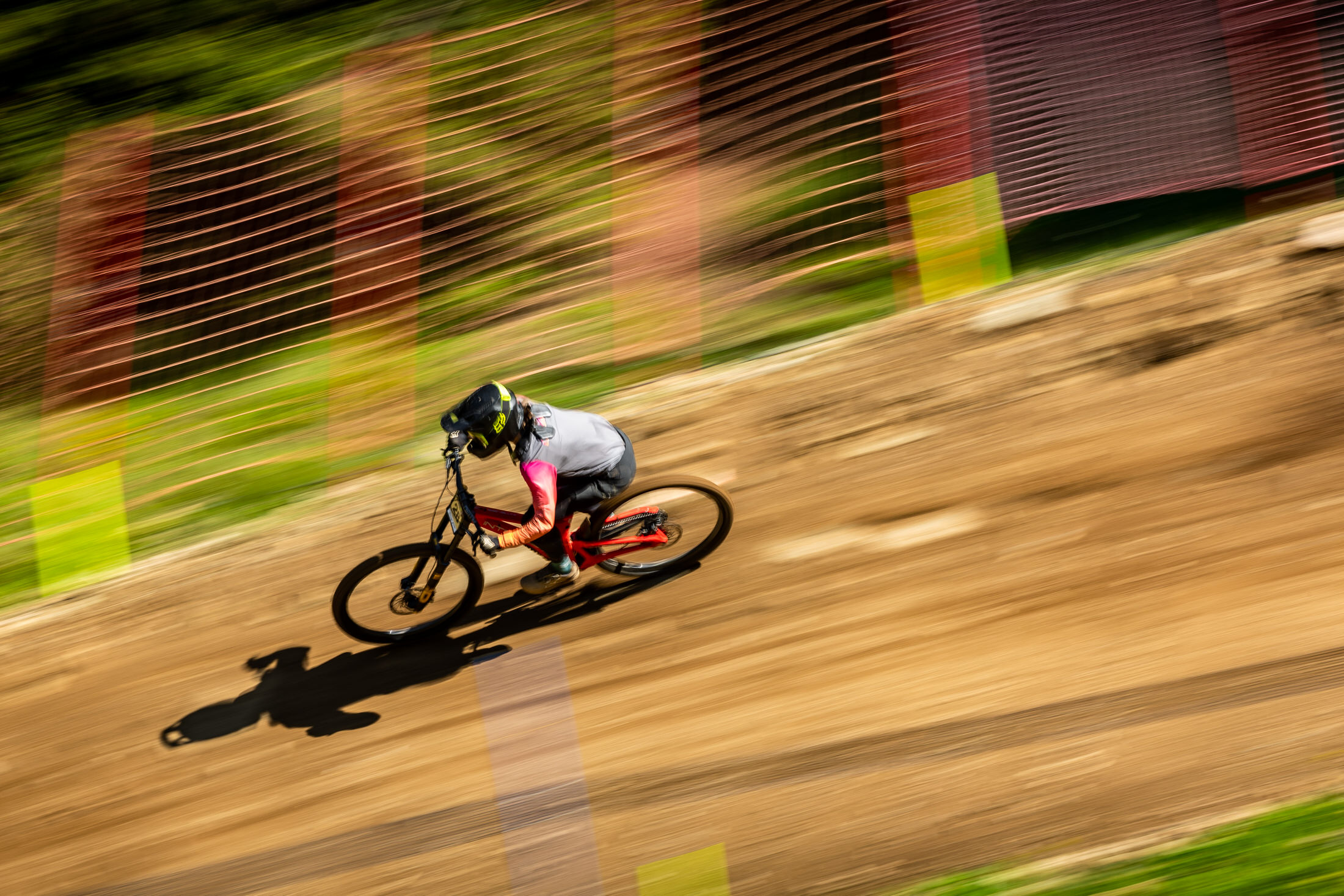
Related:
Tighter schedule, tighter racing
With the start of a new season, an equally fresh set of rules has been introduced into the World Cup scene. Now, instead of the familiar progression from track walk, to practise, to qualis, to finals, an addition of yet another run has put an interesting twist on racing.
The average World Cup for racers now stands:
- Wednesday – registration & track walk
- Thursday – 3.5hrs practice
- Friday – 2hrs practice & qualification run
- Saturday – 1hr practice & semi-finals run & race-run
Short and sharp are the words that instantly come to mind when surveying this template and it feels even shorter and sharper when you’re thrown into the middle of it.
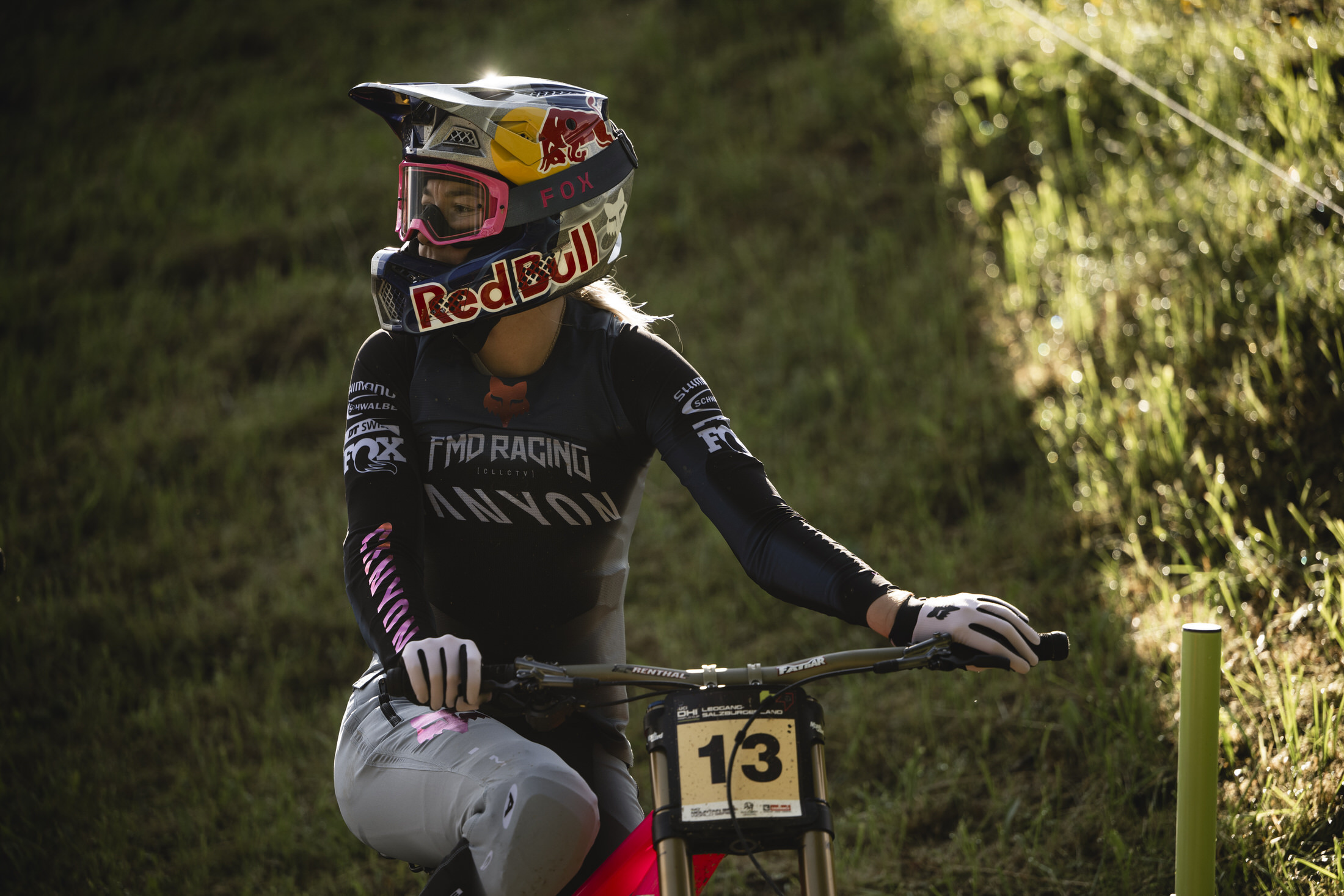
Tahnee Seagrave, rider for FMD Racing, mentioned this in an Instagram post following the first World Cup of the season in Lenzerheide, Switzerland.
“The new format had me exhausted by finals… I be (sic) running on fumes and redbull (sic) at that point,” she wrote
Looking at the flushed faces of racers at the end of the day, I think most would agree that energy stores were at a minimum towards the end of the week.
Fortunately, the support that racers receive throughout the event from teammates allows quality over quantity to reign, and larger teams have a seemingly infinite number of options to fall back on in response to their qualms, whether it be mental fatigue or physical tiredness.
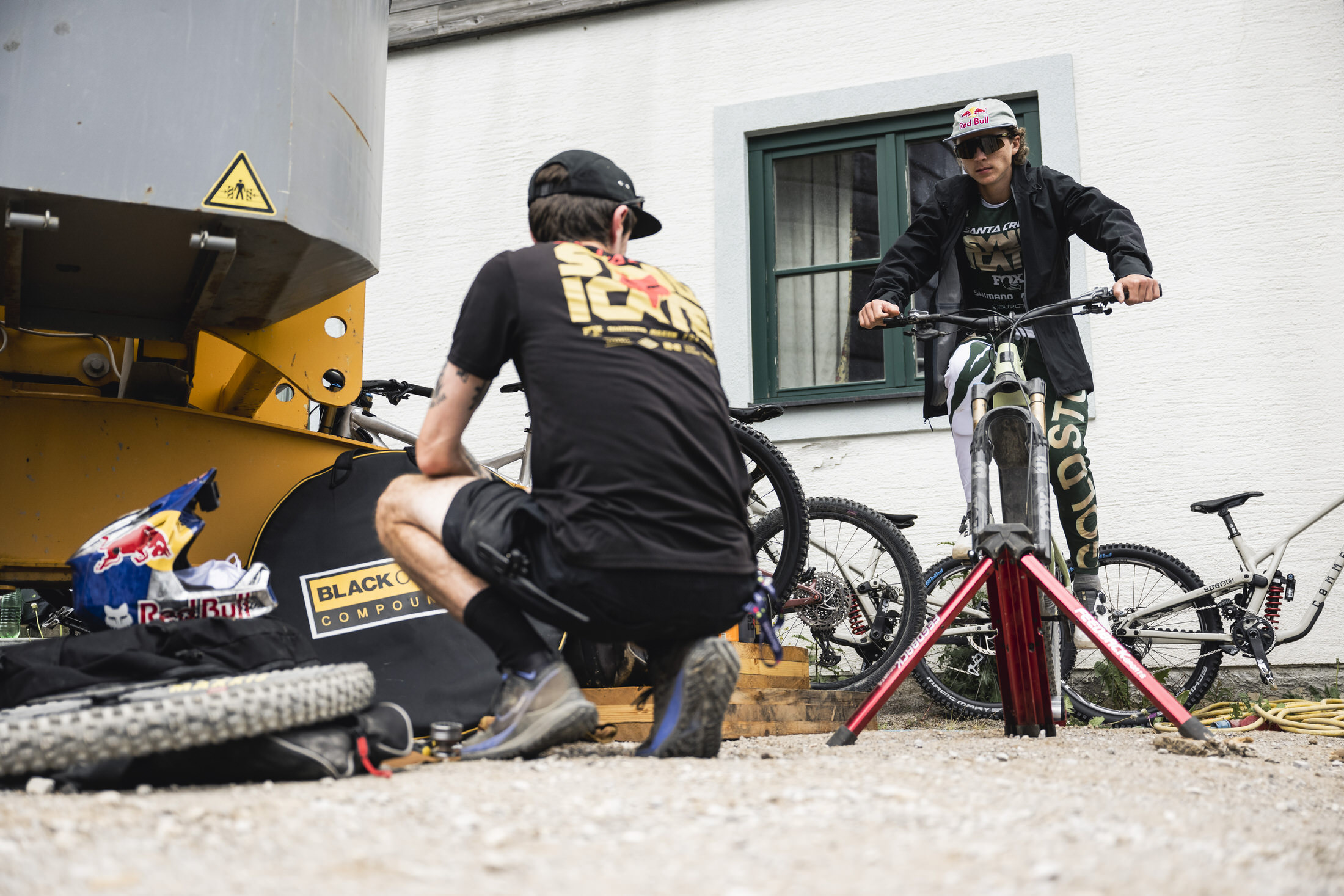
Track-side affairs
With mere thousandths of a second to play with, there’s a clock ticking relentlessly in the back of everyone’s mind.
Finding ways to outwit each second fuels a constant mental battle, and this is evident come practice. A continuous stream of riders surround the track, puzzling over sections, watching others attempt different lines through roots and rocks, or finding the courage to test their own luck in the rough.
For riders, it is very challenging to isolate the perfect line, in order to dial it in during practice. Especially when confronted with the wider, steeper and faster nature of the European tracks, there is a lot to untangle before attempting a full run.
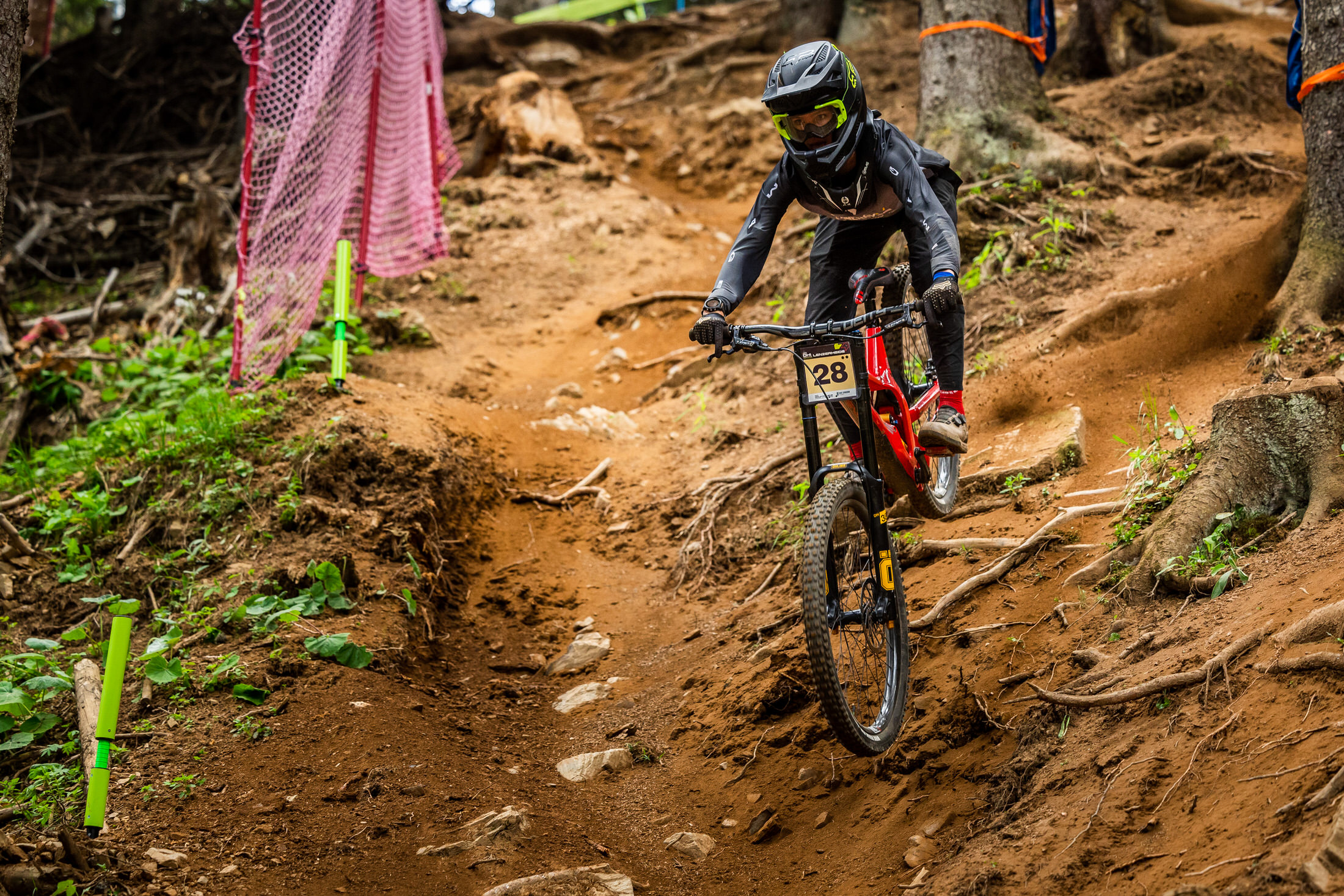
Thankfully, for many of the athletes, personal coaches, line spotters and videographers are there to assist. At their post during each practice run, they watch for emerging lines and compare speeds of rival athletes.
Indi Boer, coach for The Fastline Bikademy, was at the first two World Cups of the season and used practice time in this same way. Standing track-side enabled her to work out the fastest lines through key sections of the track for her athletes and let them know as new challenges popped up in between their runs.
“I check out lines and sections requested by my athletes (during practice),” she says. “We discuss (them) later on.”
Time seems to speed up when you need it the most, and so it is a comfort to have a second pair of eyes on the track, weeding out the perfect line down the hill.
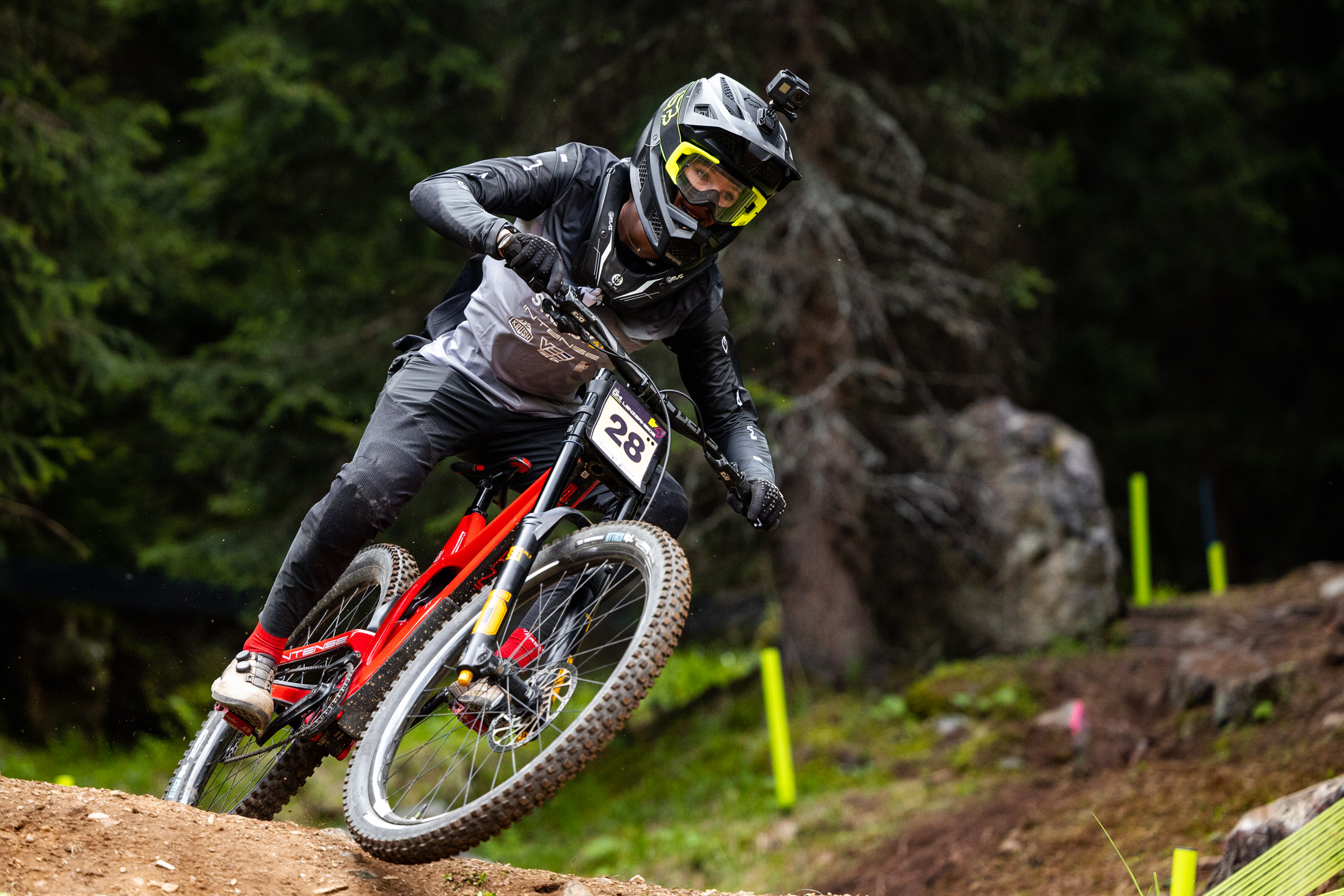
Hold on tight… it’s race day
At the pointy end of race week, the crowds are wild with energy, but the riders seem extraordinarily quiet.
No competitive athlete is unfamiliar with the pressure of race day. Whether it’s swimming lengths of a pool or sprinting around a running track, each person, whatever the sport, strives to safeguard the knowledge that they have done all they can to get to that point, and remain happy with their result.
Only 10 elite women and 30 elite men are accepted into the finals run, and it is easy for your confidence to waver and to lose sight of all the hard work you have put in throughout the week. It is an unfortunate but no less necessary mental struggle that competitors run headlong into at each race. While riders might not be able to completely leave the nerves and anxiousness behind when entering the start gate, being able to step back and survey the bigger picture makes their job much less confronting.
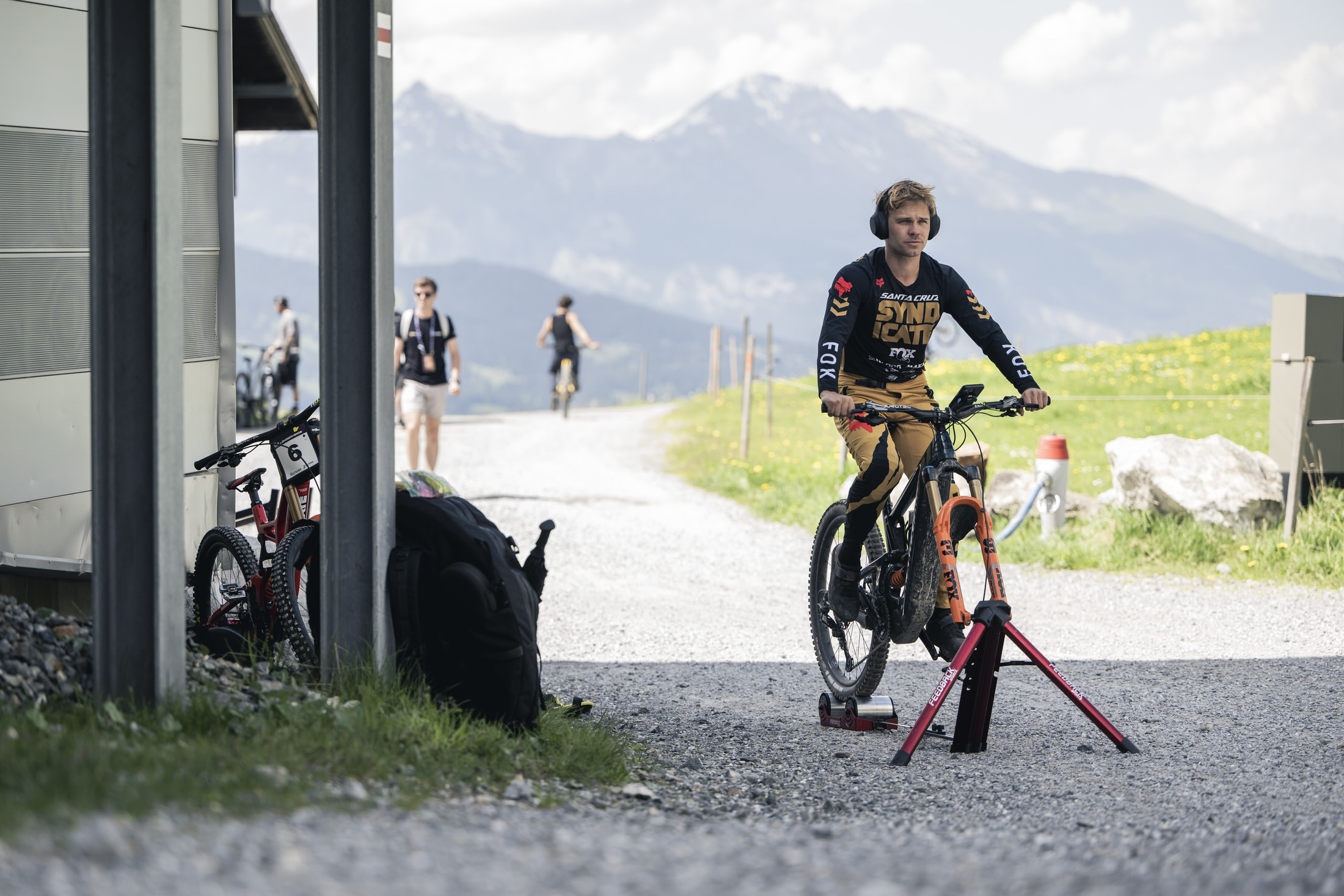
Elliot Jackson, ex-downhill World Cup racer and current presenter for Red Bull TV revealed his secret to unloading the hoard of distractions which appear before a race run.
“The thing that I always did was listen to some music, look at whatever insane view there was, because there is always a crazy view in MTB, and remind myself how lucky I was to be there doing what I loved to do”, he says.
Jackson advises to, “come from thinking about the ‘if’s’ and things that are out of your control (and) stop that”.
He is not alone in emphasising the necessity to take a moment to step back and look around.
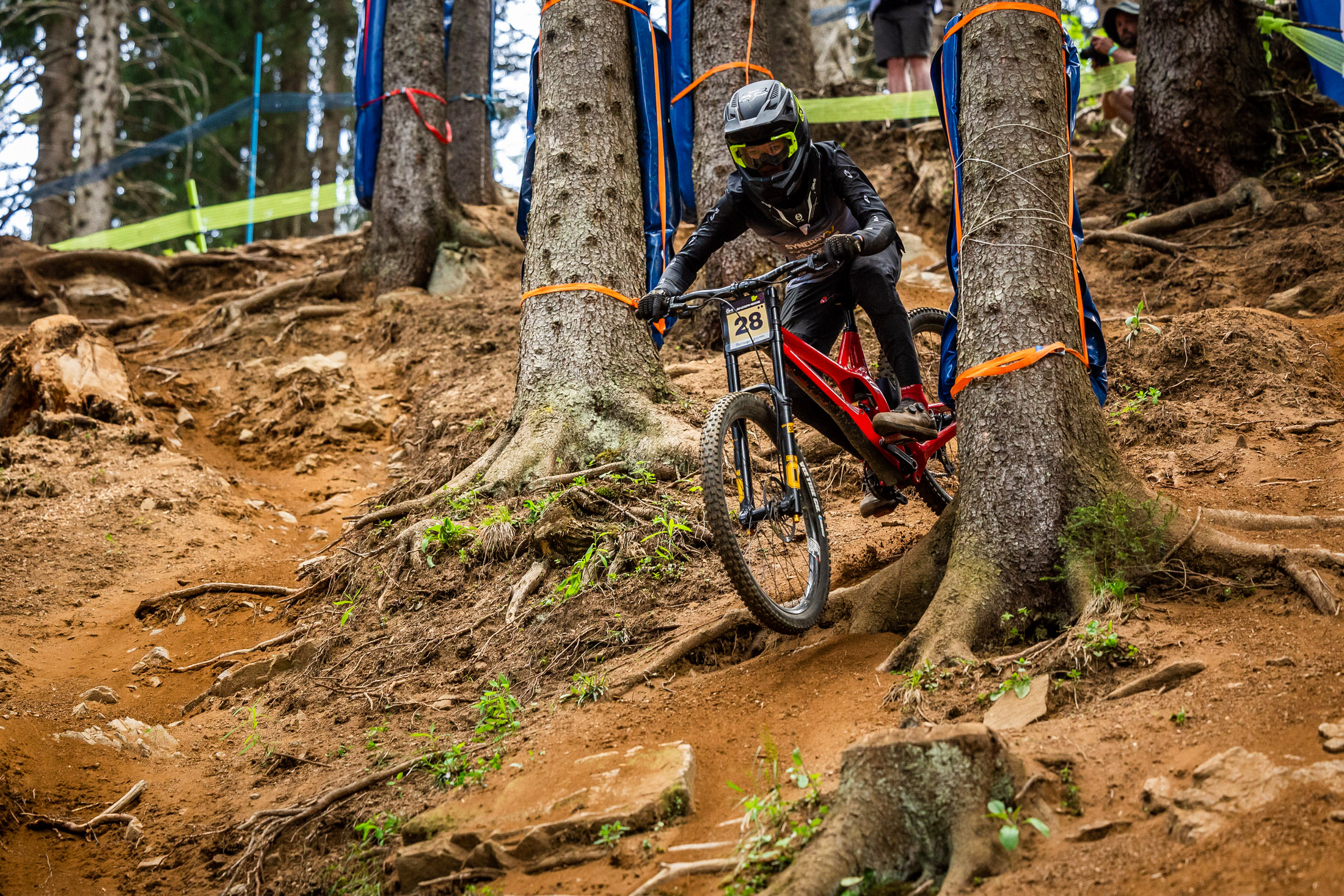
Sian A’Hern also recognised the detrimental effects of the pressure she was putting on herself to perform. She went so far as to write the words “Have Fun” and “Be Present” on her handlebars at Val di Sole to help her get down the hill. Apparently, it worked, as she made it through to finals with flying colours, ending the week with a top 10 result.
Preparation before the race is key, but taking the time to breathe and look around, “Have Fun” and “Be Present” is just as integral to a story of success.

The post-race scaries
Then, it is all over in the whirlwind of a three-minute race run. The nerves begin to relax. The adrenaline leaves the system. The fun has been had, and it is time to pack up and go.
In a body that’s become accustomed to the chaos and nervous energy which has stubbornly tormented it for the past few days, this can come as a shock to the system.
Especially during the first three World Cups, the turnaround seemed so quick from one race to the other, that racers were left a little worse for wear, too busy travelling and packing to consider any changes they may need to make to achieve a better result in the following race.

To combat this, team helpers and coaches have found ways to efficiently turn this shock deflation of emotion into a positive twist for the next World Cup of the season.
Santa Cruz Syndicate rider Nina Hoffman, and FMD Racing’s Phoebe Gale, could be seen having discussions after the race with coaches and mentors about their overall performance and what to take from it. Putting these experiences into perspective, the next race becomes a step forward in quality, as the negatives can be identified and dumped, and the positives noted and prioritised.
World Cup racers love what they do, and that’s why they keep coming back for more. The boundless highs can be quickly exchanged for challenging lows, but by setting out and following a polished plan, it is guaranteed that mountain bike racing is still their heart and soul by the week’s close.
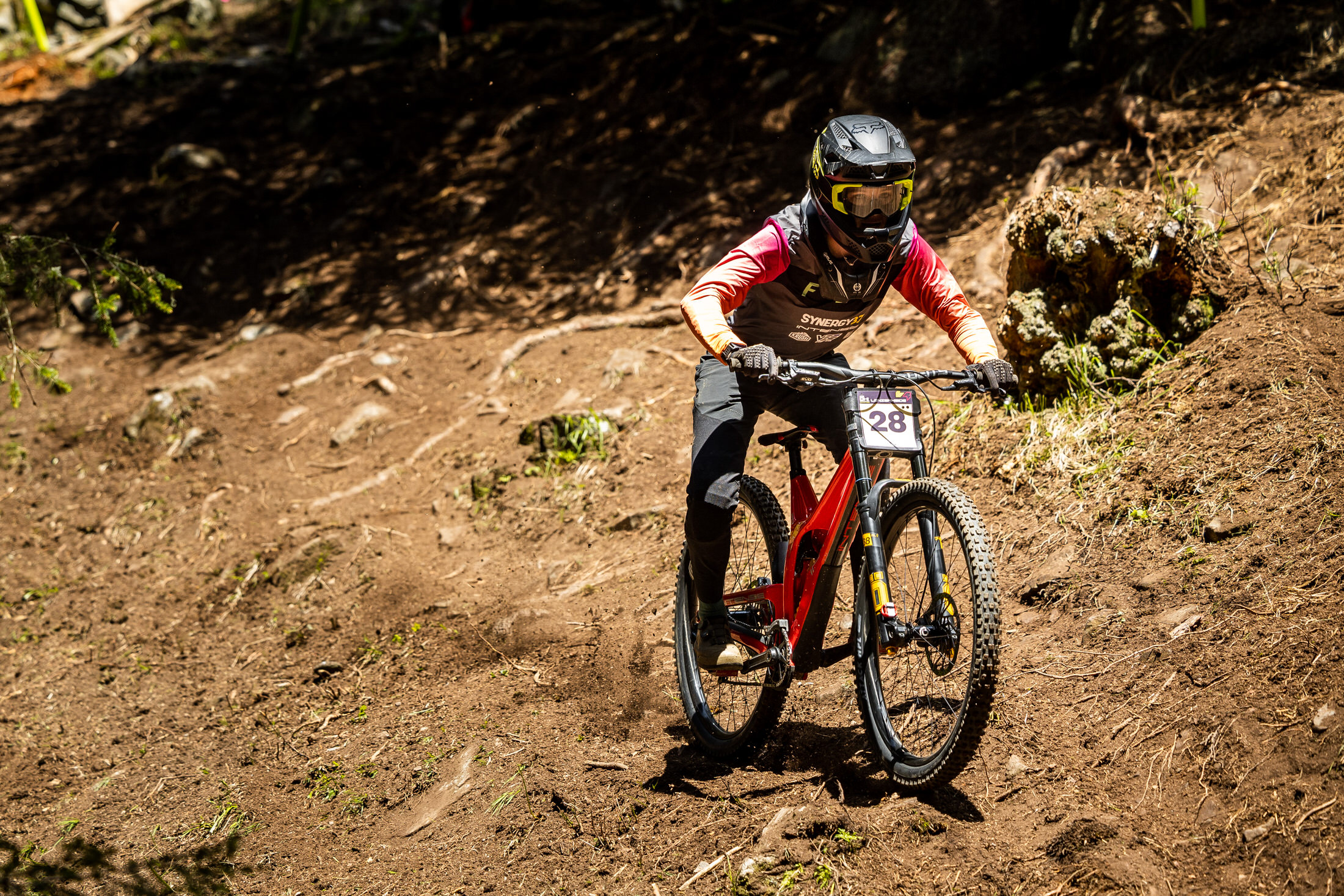
Words: Lia Ladbrook
Photos: Bartek Wolinski / Red Bull Content Pool, Nick Waygood / @nickwaygoodcreative